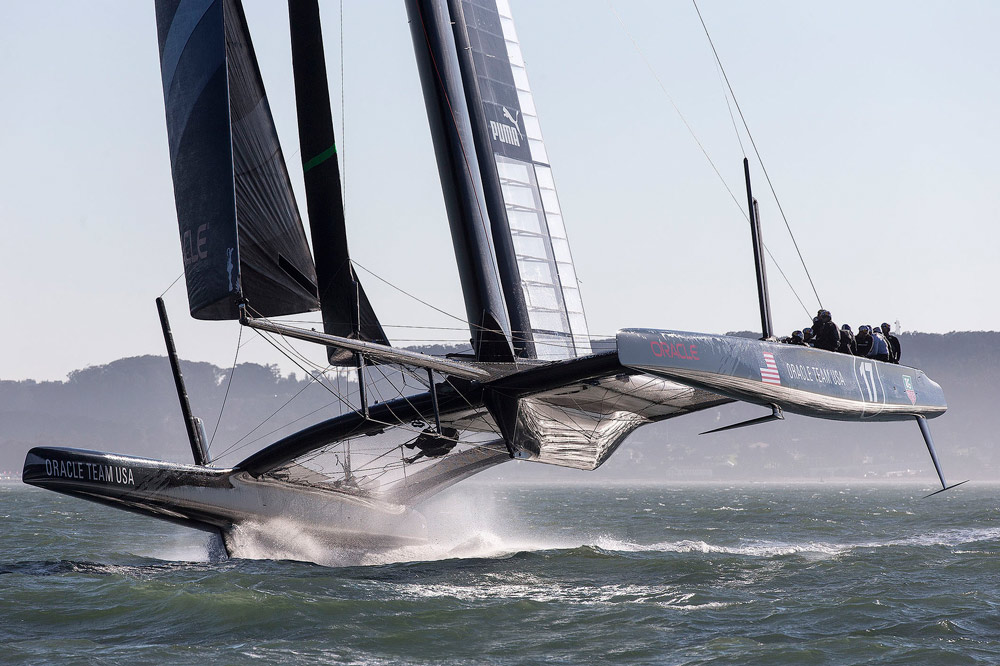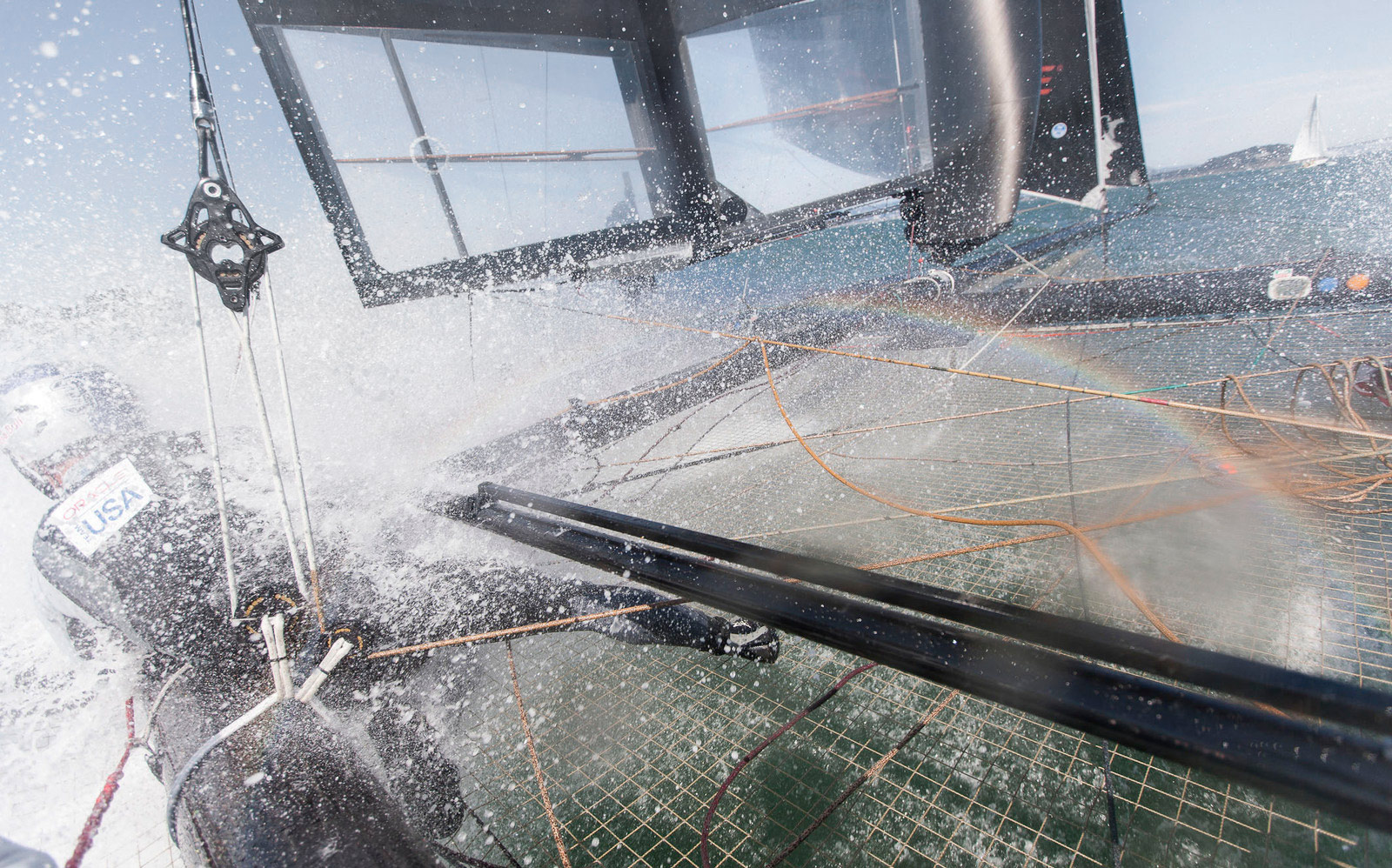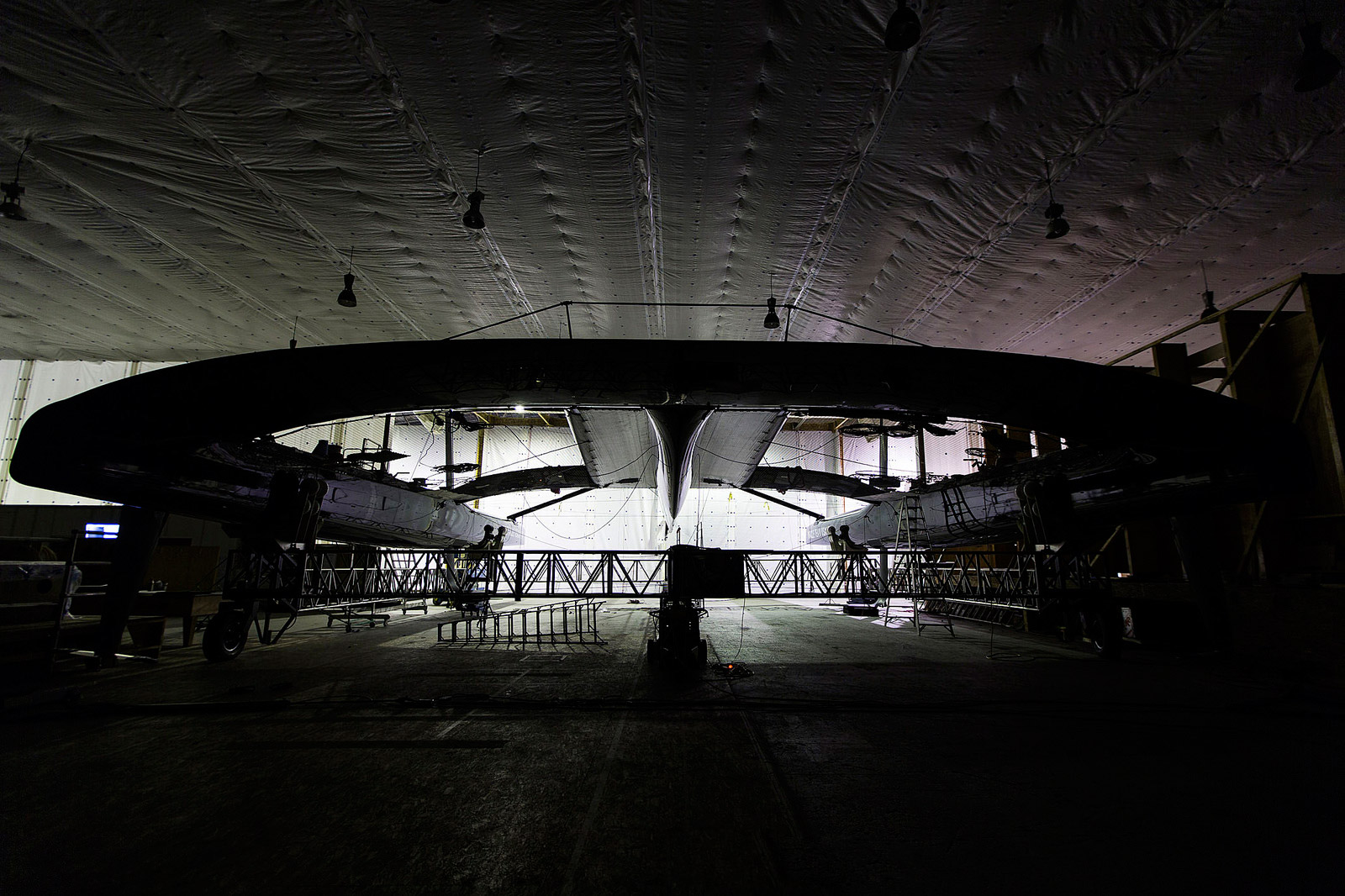-
Greased
lightningHow carbon fibre and precision engineering have taken the drag out of yacht racing
By Jonathan Bell
-
Some inventions are recognised as essential from the outset, while others take time for their true importance to be discovered. So it is with carbon fibre. First created in the aeronautical laboratories of the UK in the “white-heat-of-technology” era of the early 1960s, building on research already undertaken in the US, the obvious application of carbon fibre was aviation. Sadly, the British dropped the ball; initial batches weren’t strong enough for their high-profile debut application in the blades of a Rolls-Royce aero engine. Development costs soared, investors ran scared and manufacture of the supposedly miraculous material stalled, with the US and Japan picking up the slack.
Today, carbon fibre is at the forefront of a number of industries and used in applications and volumes that would be unimaginable to its early proponents.
The 2013 cup-winning Oracle Team USA AC27 class catamaran and crew. All photos: Guilain Grenier, © ORACLE TEAM USA
-
Traditionally expensive – especially in volume – carbon fibre’s core advantages are its lightness and strength. The convoluted and energy-intensive manufacturing process involves baking thousands of filaments in a series of operations that eventually reaches temperatures of 1,400 degrees Celsius, and then coating them in carbon, and sealing with an epoxy resin. The resulting sheets are still flexible, yet when layered and bonded under extreme high pressures, create rigid, ultra-light forms.
The benefits of building components in carbon fibre are manifold, allowing complex forms with great inherent strength, potentially replacing objects made from many smaller elements with a single moulding. As technology improves, the size of carbon fibre elements has increased, with motorsport, aviation and yacht racing traditionally leading the way.All demand high-performance materials with minimum weight, and all have the budgets to build bespoke elements in a labour intensive way. In yachting, as in aviation, scale matters. While small mouldings are obviously more suited to car manufacturing, the sheer size of wing assemblies, fuselages, hulls and masts means that new ways of designing and forming carbon fibre has to be undertaken. In yachting, one event is known for pushing available technology to the limit; the America’s Cup. Founded in 1851, it is one of the best-known and most prestigious ocean races in the world, now fought over by huge crews and hefty sponsorship budgets.

-
Water resistance is pared down to a minimum thanks to the thin foils at the rear of each hull, which, when paired with hydraulically operated forward winglets, allows the boat to skim the surface of the sea with almost zero drag.
Larry Ellison, owner and sponsor of the BMW ORACLE team, has spent around half a billion US dollars on the race. In 2008, ORACLE launched the USA 17, designed by the French naval architects Van Peteghem and Lauriot Prévost (VPLP), and built at a special facility in Anacortes Washington in 2008. By utilising the principle of lift through the massive, rigid carbon fibre and composite sails, these huge yachts are literally lifted out of the water and propelled across its surface at a velocity excelling the actual wind speed.»Put simply, the new class pushes yacht design closer to aerospace than ever before.«
The emphasis is on speed, so any technical advantages are exploited for all they’re worth. From the 1980s onwards, the traditional racing yachts began to give way to lighter fibreglass designs, with keels and sails becoming more and more aerodynamically advanced to help the boats carve through water. By the late 80s catamarans had been introduced, and the complexity of rules, regulations and classes kept the Cup’s proponents – usually a selection of nautically-minded billionaires – in court rather than on the water.
The 2013 Cup signalled another peak in the sport’s technological bias, with a new class of boat – AC72 – introduced to incorporate another innovation, the Wingsail Catamaran. Put simply, the new class pushes yacht design closer to aerospace than ever before.
-

Video: © Amory Ross / ORACLE TEAM USA
-
With triple hulls, a maximum length of 115 feet and a width of 90 feet, it’s dwarfed by the wingsail structure, rising up 223 feet (68 metres) in height – the same as a 20-storey building. As the crew became adept at manipulating the wingsail, it was extended from an original height of 158 feet, and each year of the competition has seen the boat’s performance improve. Despite having a larger surface area than the wing on the Airbus A380, the wingsail weighs just 3,500 kilogrammes, or just under two-and-half BMW i3 cars. The massively strong foils were each made of 400 kilogrammes of solid carbon fibre.
Sailing the USA 17 is an immensely complex operation. By manipulating the angle of the two-part wing, the airflow, and therefore speed can be controlled. Information is everything. The surface of the wing is embedded with fibre-optic tubes to act as data gatherers; 250 sensors provided 26,000 data points per second, giving an instant picture of loading, stress, shape, and angle. This information was piped directly into a heads-up display in the skipper’s sunglasses, while the 11-strong crew also had PDAs giving them instant data to guide their manipulation of the wing.
Clearly, without the use of materials like carbon fibre, the AC72 class could never have been created. The advantages of lightness and strength have created a whole new approach to sailing. To be at the literal cutting edge is expensive and time consuming – the boat requires 20 hours of maintenance for every hour of sailing – and the materials applications are incredibly specialised. This year ORACLE TEAM USA won the 34th America’s Cup, cementing the evolution of ocean racing into a sport of technological and physical endurance. I
-
Search
-
FIND PRODUCTS
PRODUCT GROUP
- Building Materials
- Building Panels
- Building technology
- Façade
- Fittings
- Heating, Cooling, Ventilation
- Interior
- Roof
- Sanitary facilities
MANUFACTURER
- 3A Composites
- Alape
- Armstrong
- Caparol
- Eternit
- FSB
- Gira
- Hagemeister
- JUNG
- Kaldewei
- Lamberts
- Leicht
- Solarlux
- Steininger Designers
- Stiebel Eltron
- Velux
- Warema
- Wilkhahn
-
Follow Us
Tumblr
New and existing Tumblr users can connect with uncube and share our visual diary.
»Architecture starts when you carefully put two bricks together. There it begins.«
Ludwig Mies van der Rohe
Keyboard Shortcuts
- Supermenu
- Skip Articles
- Turn Pages
- Contents


